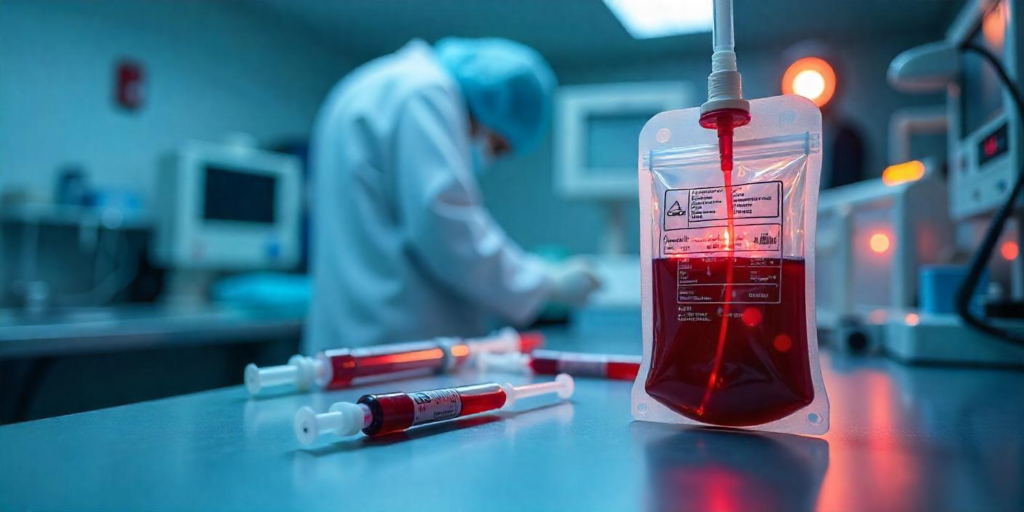Introduction: The Silent Invasion of Microplastics
Microplastics have quietly infiltrated our environment, making their way into water bodies, food sources, and now even human bloodstreams. The discovery of these tiny plastic particles in our bodies has raised serious health concerns, leading researchers and medical professionals to explore innovative solutions. One such breakthrough comes from Clarify Clinics in London, which has introduced a new blood filtration treatment aimed at removing microplastics and other contaminants from the human body.
While this development is still in its early stages, it presents a fascinating glimpse into the future of both medical detoxification and advanced water treatment solutions. But before we get ahead of ourselves, let’s break down the problem: What exactly are microplastics, how do they enter our bodies, and is filtration really the answer?
What Are Microplastics and Why Are They Dangerous?
Microplastics are plastic fragments smaller than 5mm, originating from various sources such as:
- Industrial waste and packaging breakdown
- Synthetic fibers in clothes
- Cosmetic microbeads found in personal care products
- Degradation of larger plastic debris in oceans, rivers, and lakes
These particles don’t just pollute the environment; they end up in our drinking water, food, and even the air we breathe. According to a study published in Environmental Science & Technology, an average person could be ingesting over 50,000 microplastic particles per year (PubMed).
The potential health risks of microplastics include:
- Endocrine disruption, affecting hormones and reproductive health
- Inflammation and cellular damage due to plastic particle accumulation
- Potential carcinogenic effects from plastic additives and pollutants
- Unknown long-term consequences, as microplastics may penetrate organs and cross the blood-brain barrier
With such alarming findings, it’s no surprise that scientists and medical experts are racing to find ways to remove these harmful particles from our bodies and water systems.
Blood Filtration: A Game-Changer in Detoxification?
How Does the Treatment Work?
Clarify Clinics has introduced a unique medical treatment that aims to remove microplastics and other toxins directly from the bloodstream. The process, somewhat similar to dialysis, follows these steps:
- Blood is drawn from the patient.
- It passes through a specialized filtration system that captures microplastics and heavy metals.
- The purified blood is then reinfused into the patient’s body.
This method is said to help improve:
✔️ Energy levels
✔️ Cognitive function
✔️ Sleep quality
✔️ Overall well-being
However, scientific skepticism remains. The long-term effects of microplastic accumulation are still under research, and it is unclear whether this blood filtration method will be effective as a routine detoxification process.
The Bigger Picture: What This Means for Water Treatment
Microplastics don’t just affect humans; they are a growing threat to our water sources. Current water treatment facilities struggle to fully remove these particles, leading to their widespread presence in tap water and bottled water.
How Do Microplastics Enter Drinking Water?
- Poorly treated wastewater from industrial and domestic sources
- Plastic waste breakdown in oceans and rivers
- Water bottling processes, where plastic leaches into drinking water
Traditional water treatment systems such as chlorination and basic filtration are ineffective against microplastics. However, advanced technologies like Reverse Osmosis (RO), Membrane Bio-Reactor (MBR), and Ultra-Filtration (UF) systems can significantly reduce microplastic contamination in drinking water. Companies like Genviss specialize in implementing these solutions to ensure safer water for communities and industries.
Can This Blood Filtration Technology Be Applied to Water Treatment?
If microplastics can be removed from human blood, could a similar filtration technique be scaled up for water treatment? Scientists and engineers are already exploring next-generation filtration technologies that could mimic medical-grade purification processes for municipal water supplies.
Potential future solutions include:
- Nano-filtration membranes that can capture even the tiniest plastic particles
- Graphene-based water purifiers with extreme efficiency
- Bio-engineered bacteria capable of breaking down plastics in water sources
These innovations could revolutionize how we treat drinking water, ensuring that microplastics are removed before they ever reach our bodies.
Conclusion: The Future of Microplastic-Free Living
The emergence of blood filtration treatments for microplastics marks a significant step toward tackling the problem of plastic pollution at a personal level. However, the most effective long-term solution lies in preventing plastic contamination at its source—through improved waste management, stricter regulations, and advancements in water treatment technologies.
As research continues, the hope is that both medical and environmental solutions will evolve hand in hand, creating a future where neither our bodies nor our water are burdened by plastic pollution.
Want to learn more about how Genviss is tackling water treatment challenges? Explore our services in Membrane Bio-Reactor (MBR) Technology, Reverse Osmosis (RO), and Ultra-Filtration Systems to see how we’re making water safer for everyone.

